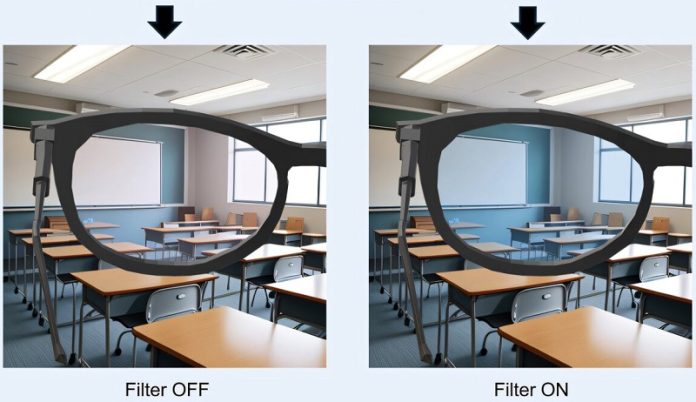
Researchers have developed a groundbreaking prototype of glasses with special lenses that could help people with photosensitive epilepsy.
These lenses block out certain wavelengths of light that can trigger seizures, offering hope for a safer and more comfortable future for those affected.
The study, published in Cell Reports Physical Science, was conducted by scientists from the University of Glasgow and the University of Birmingham.
The glasses use advanced liquid crystal lenses that are activated by tiny temperature changes.
When turned on, the lenses block more than 98% of light in the 660–720 nanometer wavelength range. This specific range is known to trigger seizures in people with photosensitive epilepsy.
“This is a hugely exciting project,” said Professor Zubair Ahmed, a neuroscientist at the University of Birmingham and co-author of the study. “It felt like science fiction when we started four years ago.
Now, we’ve shown that liquid crystal lenses can be designed to block specific wavelengths of light, helping those at risk of seizures.”
The glasses have a small circuit built into the frame that controls the lenses.
When the circuit detects potentially harmful light, it heats the lenses to a comfortable temperature for the wearer. This temperature change activates the lenses, blocking the harmful wavelengths and reducing the risk of seizures.
The glasses are particularly useful in environments where harmful light is common, such as while watching TV or playing video games.
“This project is a great example of how teamwork between different fields—engineering, neuroscience, and mathematics—can lead to discoveries that change lives,” said Professor Rami Ghannam from the University of Glasgow, who led the study.
The researchers are now focused on improving the prototype before moving to human trials. They aim to make the glasses faster to heat and cool and to adapt them for use in warmer environments.
Currently, the glasses work best in temperatures up to 26°C, but tweaks are needed to ensure effectiveness in hotter climates.
The researchers believe these glasses could transform the lives of people with photosensitive epilepsy by providing an easy and effective way to reduce the risk of seizures. While the technology is still in development, the early results are promising.
“Our work demonstrates the potential of this technology to protect people from light-induced seizures,” said Ghannam. “We are excited to take this forward and explore how it can be further improved for real-world use.”
This innovative project offers a glimpse into how cutting-edge technology can make a real difference for people living with challenging conditions.



